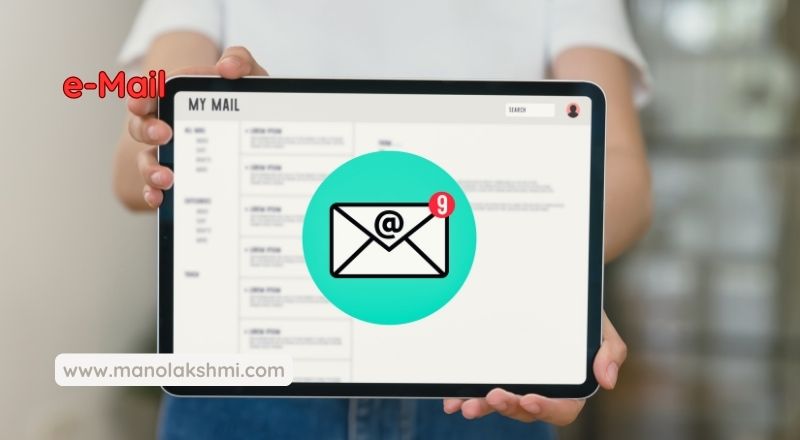An email is a message that is sent electronically from one computer to another. It is a quick and easy way to communicate with people who have an email address. Emails can be used for personal or business purposes. You can create an email account for free at many different websites. Once you have an email account, you can log in and start composing emails. When you compose an email, you need to include the recipient’s email address, the subject of the email, and the body of the email. The body of the email is where you type your message. When you are finished composing your email, you can click send, and your email will be sent to the recipient.
Emails are a great way to stay in touch with friends and family, and they are also a great way to communicate with colleagues and clients. Emails can be used to send documents, photos, and other files. They can also be used to schedule appointments and to make reservations.
Emails are a very important part of our lives. They are a quick and easy way to communicate with people all over the world.
How to write an effective email?
Writing an effective email can be a game-changer for your professional communication. Here are some additional tips to help you make the most of your message communication.
Identify your purpose
Before you start writing your email, identify your purpose for writing it. Are you requesting information, giving an update, or sharing a document? Knowing your purpose will help you structure your email effectively.
Once you have identified the purpose of your email, the next step is to consider your audience.
Who will be receiving your email?
Will it be a colleague, a superior, a client, or someone else?
Understanding your audience will help you tailor the tone and language of your email to ensure that your message is received and understood as intended.
In addition to knowing your purpose and audience.
There are several other key elements to consider when writing an effective email. These include:

Using a clear and informative subject line.
Including a polite and professional greeting.
Using proper grammar and spelling.
Closing with a clear call to action or next steps.
By following these guidelines, you can ensure that your email is well-received and achieves your intended goal.
Keep it concise:
People receive countless emails every day, so keep your message brief and to the point. Avoid lengthy paragraphs, and instead, use bullet points or numbered lists to make your email easy to read.
If you’re struggling to condense your message into a short email, try breaking it down into smaller, more specific points. This will help you avoid overwhelming the reader with too much information.
Additionally, consider using a clear and concise subject line that accurately reflects the content of your email. This will help your message stand out in a crowded inbox and increase the chances of it being opened and read.
Finally, always proofread your message for any grammatical errors or typos before hitting send. A well-written and error-free email can make a great impression on the recipient and increase the likelihood of a positive response.
Use a clear subject line
Your topic line should accurately mirror the scope of your email and be brief. It should also grab the reader’s attention and encourage them to open your message.
Additional tips to help you craft an effective subject line for your email:
Keep it short and sweet: aim for 50 characters or less, as many email clients cut off longer subject lines.
Be specific: Use descriptive language that accurately conveys the main topic or purpose of your emails.
Use action-orientated language: verbs like “join”, “learn”, or “discover” can help entice readers to open your email.
Personalise when possible: If you have access to the recipient’s name or other relevant information, consider incorporating it into the subject line.
Avoid using all caps or excessive punctuation. These can come across as spammy and turn readers off.
Remember, your subject line is the first thing your reader will see, so it’s important to make it count!
Address your recipient properly:
Use a professional greeting such as “Dear” followed by their name or title. Use “Hi” or “Hello” only if you have an informal relationship with the recipient.
Adding context to your message when sending an email is crucial, as it sets the tone for the rest of your message. A professional greeting helps you to establish a formal and respectful relationship with the recipient. It also shows that you have put some thought and effort into the email. However, if you have a more informal relationship with the person you are emailing, then it’s appropriate to use a more casual greeting such as “Hi” or “Hello”. Here are some additional tips to consider when crafting a professional email:
Always use the recipient’s name, and make sure you spell it correctly.
Avoid using slang or jargon that the recipient might not understand.
Keep your tone polite and professional, even if you are addressing a complaint or issue.
Use a clear and concise subject line to summarize the purpose of your email.
By following these guidelines, you can ensure that your emails are well-received and that you make a positive impression on the recipient.
Use proper grammar and spelling
Flawed grammar and spelling can make you seem unskilled. Bring a period to proofread your email before mailing it.
Here are some additional tips to help ensure your emails are professional and error-free:
Utilize clear and brief language to convey your note, actually.
Avoid using slang or overly casual language, unless it is appropriate for the recipient and the context.
Use proper punctuation and capitalisation to make your email easier to read and understand.
Consider the tone of your emails and adjust it accordingly. For example, if you are sending a formal business e-mail, your tone should be professional and respectful.
Always double-check the recipient’s name and email address to make sure you are sending the emails to the right person.
If you are unsure about the spelling or meaning of a word, look it up to avoid embarrassing mistakes.
Remember that emails can be forwarded or shared, so be careful what you write and how you phrase it.
Finally, always thank the recipient for their time and consideration, and sign off with a polite and professional closing.
Use a professional tone
Your email should be written in a professional tone that reflects the nature of your relationship with the recipient.
In order to ensure that your email is well received and taken seriously, it is vital to view the following leads:
Start with a greeting appropriate for the recipient’s level of formality. For example, “Dear [Name]” for a formal email or “Hi [Name]” for a more casual one.
Use exact and succinct language to convey your note. Avoid using slang or overly complex terminology that could confuse the reader.
Keep your tone respectful and polite, even if you are addressing a complex or sensitive topic. Remember that the way you communicate can have a big impact on how the recipient perceives you and your message.
Use proper grammar, punctuation, and spelling to demonstrate your attention to detail and professionalism. Proofread your emails carefully before mailing them.
Finish your emails with a knightly close, such as “Sincerely” or “Best regards,” followed by your name and any relevant contact information.
Include a clear call to action
Contain a clear call to action at the end of your email. It could be a request for feedback, a call to schedule a meeting, or an invitation to an event.
Adding a clear call to action at the end of your email is essential to encourage your recipients to take action. Here are some tips to consider when crafting your call to action:
Keep it concise and straightforward.
Use action-orientated language that clearly communicates what you want your recipients to do.
Make sure it aligns with the purpose of your email and the recipient’s interests.
Use urgency, scarcity, or exclusivity to create a sense of importance.
Provide a way for recipients to easily take action, such as a link or a phone number.
Remember, the call to action is the most critical part of your email, so make sure it stands out and is easy to find.
Use a good email autograph:
Adding a proper email signature to your emails can provide important information to the recipient and can also help you appear more professional. View the ensuing details in your email signature:
Your full name and position.
Your company name and logo, if applicable.
Ties to your social media shapes.
A brief, professional quote or tagline.
Remember to keep your email signature simple and effortless to read. Don’t detour using too many fonts or colors, as this can divert from important details in your signature.
By including a good email autograph in your emails, you can make a positive impression on your recipients and ensure that they have all the information they need to get you.
Your email signature should include your name, your position title, and your contact information.
Avoid using all hats or undue shout-out points:
These can come across as unprofessional and can be perceived as shouting.
It’s important to maintain a professional tone in written communication, and using all caps can detract from that.
It can be perceived as shouting or anger, even if that wasn’t the intention.
It’s can be harder to read than mixed-case text, especially for people with visual impairments.
It can make the message feel less personal since all caps can come across as impersonal or robotic.
To avoid these issues, try to use mixed-case text and use other formatting options (like bold or italics) to emphasise important words or phrases. This ensures that your message comes across clearly and professionally.
visit support our page: The Yoga Method: Preventing and Treating Pain
